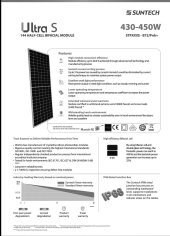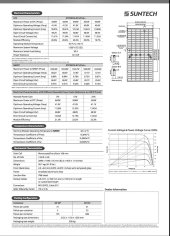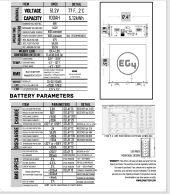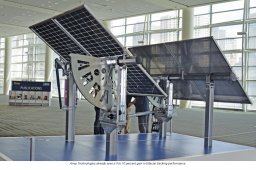dobsonimages
New Member
- Joined
- Jan 27, 2022
- Messages
- 8
Hello
I live off the grid and I purchased a tracker that will hold 12 450 watt Suntech panels.
I plan on running a 48 volt system with a SOL-ARK 12K inverter to charge a model 3 standard range Tesla with a 240 14-50 outlet
I may upgrade to a Tesla wall charger in the future. The only 120 usage I use is for LED lights for the home a energy saver fridge and a 200 watt sound system. The 240 side of the Inverter will be for the Tesla.
What settings should I use for the signature solar 48V/100AH EG4LL 5.12 KWH batteries to get the longest life out of this battery bank?
Will the 12 panels be enough to charge the batteries and the Tesla. I also have the option to add 4 more 450 watt suntechs to the
system, but plan on starting with 12 for now.
Will the SOL-ARK 12K handle the charging for the Tesla? I
I have purchased all the panels , 3 batteries , tracker. I have not purchased the SOL-ARK just wanted to reach out to make sure I am making the right choices and that my battery settings will work. I have been off grid for 30 years I have no plans of ever going on the grid. Any help would be appreciated , an electrician will be doing the final hook up and inspection. The panels will be on a manual solar array close to my house that I can easily move though out the day to get the most out of the sun.
Thank you for your time.
48V 100AH LCD Battery by EG4 – Signature Solar
Suntech 450 W Mono HiPower Mono Solar Panel STP450S-B72/Vnh
I live off the grid and I purchased a tracker that will hold 12 450 watt Suntech panels.
I plan on running a 48 volt system with a SOL-ARK 12K inverter to charge a model 3 standard range Tesla with a 240 14-50 outlet
I may upgrade to a Tesla wall charger in the future. The only 120 usage I use is for LED lights for the home a energy saver fridge and a 200 watt sound system. The 240 side of the Inverter will be for the Tesla.
What settings should I use for the signature solar 48V/100AH EG4LL 5.12 KWH batteries to get the longest life out of this battery bank?
Will the 12 panels be enough to charge the batteries and the Tesla. I also have the option to add 4 more 450 watt suntechs to the
system, but plan on starting with 12 for now.
Will the SOL-ARK 12K handle the charging for the Tesla? I
I have purchased all the panels , 3 batteries , tracker. I have not purchased the SOL-ARK just wanted to reach out to make sure I am making the right choices and that my battery settings will work. I have been off grid for 30 years I have no plans of ever going on the grid. Any help would be appreciated , an electrician will be doing the final hook up and inspection. The panels will be on a manual solar array close to my house that I can easily move though out the day to get the most out of the sun.
Thank you for your time.
48V 100AH LCD Battery by EG4 – Signature Solar
Suntech 450 W Mono HiPower Mono Solar Panel STP450S-B72/Vnh
Attachments
Last edited:







